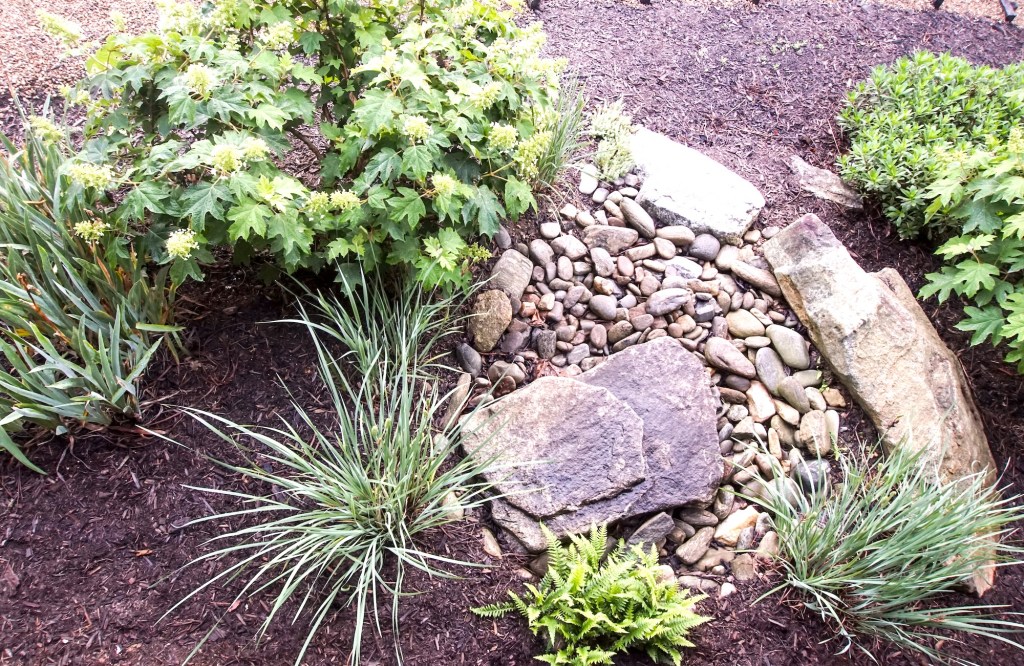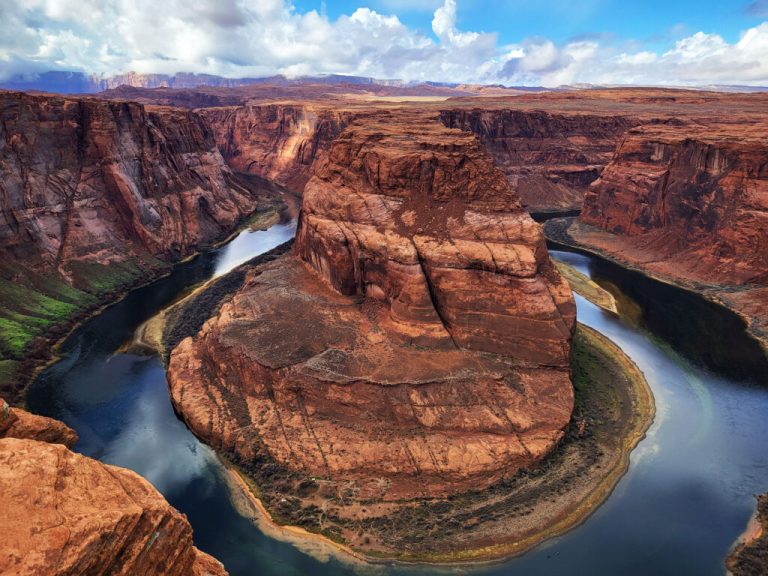Heavy rains can leave gardens looking like the aquatic levels in a video game, unhappily turning terrestrial foliage into floating plants. And the runoff from these events can also do damage to the local water supply. There’s an easy, aesthetically pleasing way to harness that extra water, though, and it can benefit your backyard and the environment at large.
Rain gardens are concave areas around 6-8 inches deep that collect runoff and allow it to soak into the ground and irrigate the plants within and around them. They’re particularly helpful for individuals who have flooding issues or frequently manage the impact of storms, but make a lovely addition to any yard.
Because they can capture runoff from roofs and other surfaces, rain gardens also collect the pollutants — like fertilizer, chemicals, oil, garbage, and bacteria — that make it into that water. Redirecting it into the soil prevents those harmful substances from entering area waterways, which can both cause erosion and contaminate drinking water.
@texasgardening My simple DIY rain garden after a storm. #texasgardening #centraltexasgardener #gardening101 #landscape #gardenproject #raingarden
♬ original sound – JennieGardens
“[The rain garden] allows the water to infiltrate slowly, over the course of the next day or so, and it waters all the roots of this tree and all the plants around here. [It] keeps the water on property and out of storm drains,” Austin-based landscape designer and gardener Jennie Ostertag explains in a TikTok video.
Additionally, creating a rain garden is a great opportunity to add more endemic greenery and flowers to your yard that are already adapted to weather conditions in your locale.
“As a rule, native vegetation should be incorporated into a rain garden,” per the Groundwater Foundation. “Native plants don’t require fertilizer, have good root systems, and are better at utilizing the water and nutrients available in their native soils than non-native species.”
Furthermore, the landscaping features attract birds, butterflies, and other pollinators. And if you’re worried about standing water becoming a breeding site for mosquitos, don’t be: Since the moisture soaks into the ground within 12-48 hours, the pools don’t offer the opportunity for those pests to populate.
Read on for tips for getting started as well as links to helpful resources.
Scope out a spot in your yard that is at least 10 feet away from the foundation of your home and not over a septic system, utility line, or drinking water well.
At least 72 hours before you break ground, dial 811, the national “call-before-you-dig” phone number, to create a ticket informing utility operators in your area that they need to mark any buried utility lines on your property with paint or flags. Each state has specific requirements for how long you must wait before digging. Learn more here.
Do a simple infiltration test to determine how quickly the soil in the area you’ve chosen will soak up water. Ideally, the soil should soak up water at a rate of 0.5-1 inches per hour. Groundwater Foundation suggests the following steps:
- Digging a hole in the location of your choice that’s 6-12 inches deep and at least 4 inches in diameter.
- Fill it with water and leave for an hour to prewet the soil.
- Refill the hole after an hour and push a popsicle stick into the side of it to measure the water level.
- After an hour, measure the level again.
- If the water level dropped by one-half inch or more, you’ve got yourself the perfect site for a rain garden.
Consider doing a soil test so you know whether or not you have high levels of clay in your soil, and will thus need to add sand, compost, or an underwater drainage system. Get the detailed steps and learn how to interpret their results on page 10 of this rain garden installation guide. Ideally, your soil should be 50%-60% sand, 20%-30% topsoil (low clay content), and 20%-30% compost.
Determine how large you want your rain garden to be with this nifty sizing calculator — part of a cool in-browser app that walks you through the entire process and includes a searchable plant catalog.
Select native plants to populate your rain garden — you can research which plants are native to your area online or ask for help at your local nursery. There are also some considerations you can take for maximum aesthetic value. The University of Nebraska-Lincoln recommends the following:
- Place taller plants in the middle of the garden and gradually shorter plants toward the perimeter, to create landscaping depth and give the visual impression that the shorter plants are “holding up” the taller ones.
- Repeat several plants throughout the garden to unify it with colors, textures, and bloom times.
RELATED: Got a Green Thumb? Try These 16 Must-Have Gardening Products











